Get in on GSSA’s great online auctions
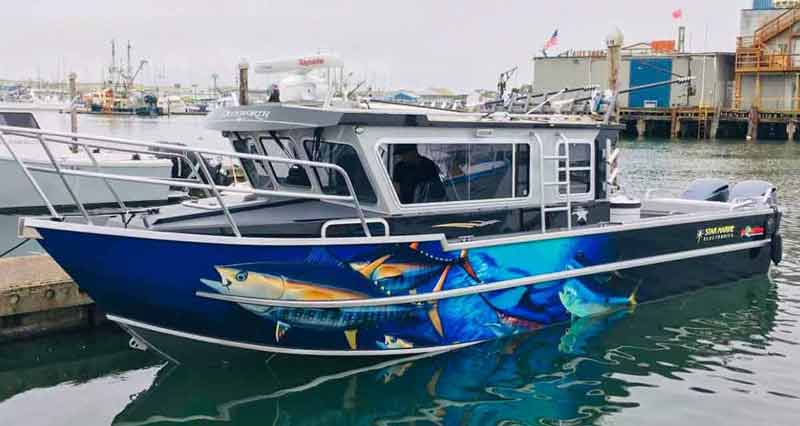
GSSA is off and running with our online auctions. Necessity is the mother of invention and we needed to find a way to replace lost income from our fundraising dinner auctions. We started by auctioning off a Little Chief smoker accompanied by some really nice wines and beer. We next auctioned off an albacore tuna fishing trip donated by a great GSSA supporter.
We will be offering multiple auction items simultaneously with our next auction. Among these:
- A custom Seeker Rod and Accurate reel with Beckman net, tackle and flashers, and GSSA hoodie, tee shirt and hat.
- A Furuno GP 1871F GPS chart plotter. This 7” wide GPS/Waas chart plotter is a compact, powerful unit with fish finder and chirp feature. Can be connected to the 1st Watch Wireless Radar (Output Power 4 kW) giving your Chart Plotter a major upgrade in accuracy and safety. Transducer, not included.
- Dinner for six at the William Tell House. You and five friends or family can have a wonderful day out on the coast and enjoy dinner at Marin County’s oldest saloon. The William Tell house in beautiful Tomales has a huge patio for outdoor dining, delicious food, and craft cocktails.
So if you are thinking about going on a fishing trip, or buying some tackle, or gearing up for the coming crab season, or even refitting the boat with new electronics, keep your eye on our auctions. You may get a shot at a great deal, and unlike buying at a store, you’ll be contributing to GSSA’s work to keep our salmon runs vibrant.
Hot water expected to kill incubating salmon eggs in upper Sacramento River this fall, moment of truth near

You heard it here first, months ago. We will lose salmon spawn this year in the upper Sacramento Basin due to overheated water released from Lake Shasta by the federal Bureau of Reclamation. We worked all spring to head this off but failed to convince the right people. The matter ended up in front of the State Water Resources control Board. We don’t know everything that happened behind the scenes but the CA Dept. of Fish and Wildlife leadership apparently didn’t share our concern over the state’s salmon runs or give the water board what it needed to stop the carnage.
Meanwhile in response to a lawsuit the state water board settled with the California Sportfishing Protection Alliance the state water board is attempting to force the federal Bureau of Reclamation to come up with a better protocol for sharing information with the water board, including forcing Reclamation to model alternative operations that reduce diversions in order to improve temperature management, and provide that information to the water board very early in the year. If Reclamation has to provide that info to the water board early in the year, it gives us and the Board more time and alternatives from which to improve temperature management. The settlement agreement helps give the water board reason for pushing Reclamation hard on this, but time will tell if they will.
Salmon rebuilding plan updated
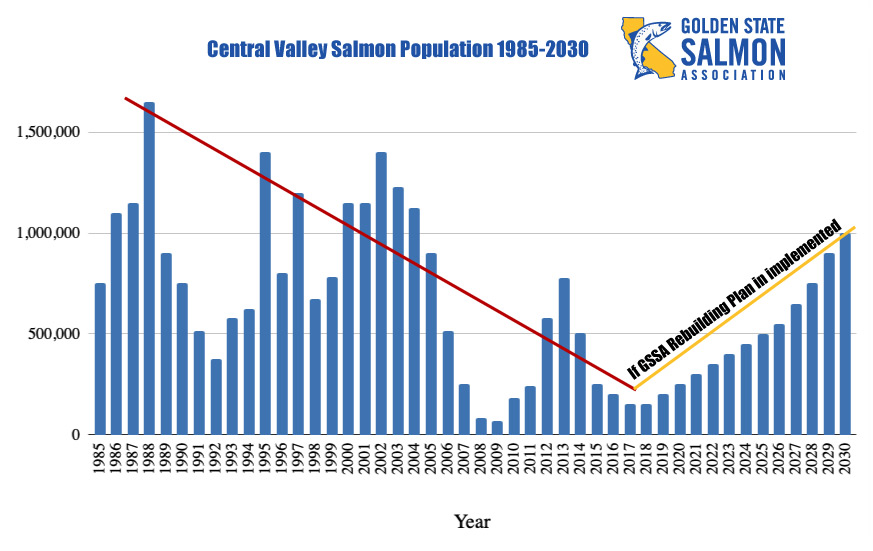
Early in GSSA’s existence we worked with independent and agency scientists to craft a plan to restore Central Valley salmon runs. Since then we’ve continuously refined the list of restoration actions as new information has become available and to take advantage of opportunities as they arise. Of course most restoration projects aren’t easy, or they’d already been done, but that doesn’t stop us from plowing forward.
We’ve recently updated the plan and posted it to our website. Among the projects is restoration of more side channel rearing habitat in the upper Sacramento Basin and getting the state to move release of more hatchery fish further west in the bay. The side channels are giving us much improved rearing and predator avoidance habitat and moving hatchery release sites west is giving us up to 40 percent higher survival.
The 12 projects highlighted as priorities would give us returns of at least a million adult salmon a year if fully implemented and we encourage you to check them out.
We’re now set up to receive donations of stock that could give you a big tax break

Some of you may have bought stock in Netflix, Apple, Tesla or Facebook years ago and got it for a song. Now it’s greatly appreciated in value and if you want to sell, you’re looking at incurring a big capital gains tax bill. One option is to donate some of it directly to GSSA and get a big tax write off based on today’s value of the stock. Remember, GSSA is a federally registered 501c3 non-profit allowing donors to deduct any kind of donation. We recently did the paperwork that allows us to receive stock donations which we can then sell to help fund GSSA.
GSSA Ladies trip scores again

The annual GSSA Fish Like a Girl fishing trip occurred August 16 and like every one before, it was a smashing success. The trip sold out within hours of it being posted. To get going on an exciting note, the day started with a lightning storm in the predawn skies over the bay. This was followed by a solid fish per rod day of catching big salmon. GSSA swag was exchanged, footwear was compared, and the male captain and deckhand tried to lay low and stared in awe as the ladies calmly yarded in salmon after salmon. Another trip is planned for later this season, and like the first, it sold out within minutes of being posted.
Plenty of jacks in the ocean, we’re in for another good year next year. After that, we don’t know.
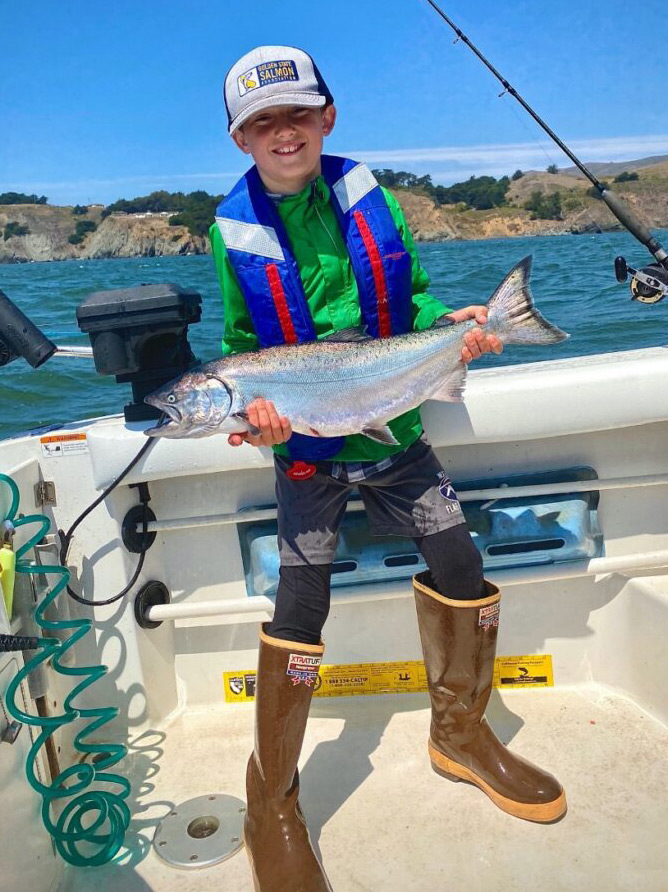
One thing ocean fishermen and women are seeing is a good number of small fish in the ocean, even into the late summer. These appear to be two year old fish which would be expected to return to Central Valley rivers as adults next year. Assuming they are next year’s fish, we should be looking at another decent fishing season. These fish were born in late 2018 and exited the Central Valley and the Bay in the spring of 2019 when we had good runoff from a wet winter and spring. So we’d expect to see a good number survive. Runoff this past spring of 2020 wasn’t very good which will affect what kind of fishing we’ll have in 2022. The silver lining is the move of more hatchery releases west in the bay which has provided the equivalent of adding a new hatchery in terms of number of fish that survive to adulthood.
Salmon and Wildlife Restoration Fund in Trouble
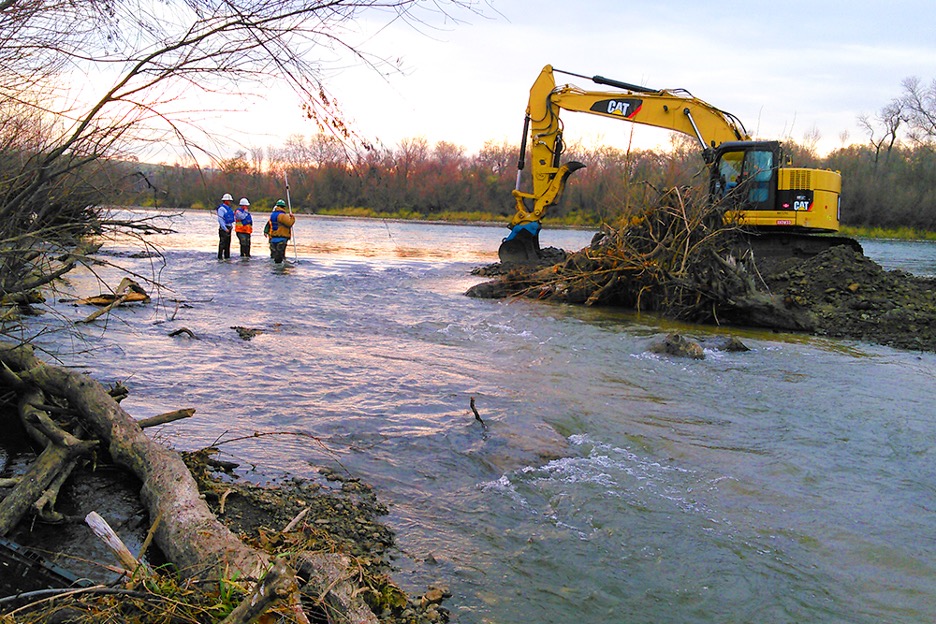
In 1992 a federal law was passed that required the big water districts and electric power suppliers that get water and electricity from Shasta, Folsom and other federal Central Valley dams to pay into a fund to help restore fish and wildlife. The logic was those who benefit from the dams should pay for some of the damage done by them. The federal law said $50 million (in 1993 dollars) should be spent annually to repair the damage. Some water and power users have chafed at making these payments and recently the power companies won a court ruling putting their future contributions into doubt. Years ago, GSSA made itself a stakeholder in the annual process to decide how these funds should be spent. We’re tracking the current efforts by some to whittle this fund down and will work to see that salmon will continue to see its share of benefit from it.
Court case challenging mutant genetically modified salmon progresses
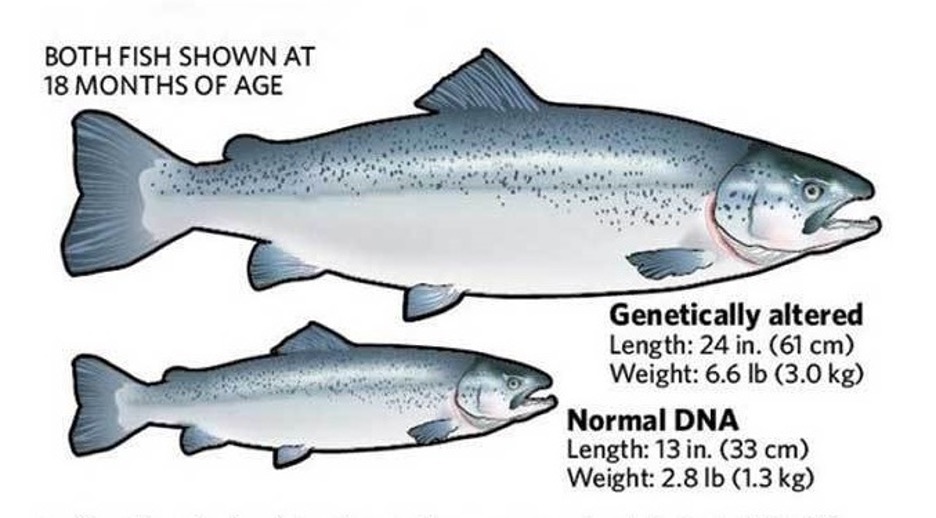
Commercial salmon trollers experienced financial shock in the early 1990’s when farmed Atlantic salmon swamped the market. Since then consumer awareness and labelling have helped differentiate real troll caught from farmed salmon and boosted prices for real salmon. Salmon farmers have taken things further by genetically altering Atlantic salmon to grow into oversized mutants, twice as fast. GSSA and allies are in court seeking to reverse the federal government’s casual stamp of approval on these creatures.
At a recent hearing the judge seemed interested in why the federal Food and Drug Administration failed to do a full Environmental Impact Statement and instead rubber stamped the production of genetically modified salmon. We are hopeful this signals that he agrees there needs to be much more consideration and scrutiny of the potential environmental damage these mutants could cause if they ever break free (like all other farmed salmon have at one point or another) and interbreed with wild salmon.
Attorneys for the company making the mutant salmon, perhaps sensing the tide may be turning against them, asked the judge to allow them to provide additional arguments to support their position. The judge didn’t answer directly and instead said he’d take the arguments under advisement and let the parties know his ruling at a later date.
Battle Creek could pick up miles of additional habitat with some dynamite and a cooperative PG&E

GSSA has had exploratory discussions with the USFWS and others to see what improvements could be made to Battle Creek for salmon. The low hanging fruit appears to be several easy steps that would add miles of newly accessible spawning habitat above the Coleman Hatchery. Opening up this reach would require the removal of several small rock landslides that block adult salmon swimming upstream. One federal official engaged in fish restoration opined all that’s needed would be a little bit of dynamite in experienced hands. The Eagle Canyon Dam lies in between the rock landslides. A newly installed fish ladder and screen over a diversion pipe reportedly require oversight to function. PG&E is responsible for operating this facility but is contesting this responsibility. So an enforceable order getting PG&E to step up, along with the rock slide removal, would likely open approximately 10 additional miles of premier spawning and rearing habitat to salmon. GSSA is continuing to explore how we can provide benefit to seeing that these steps are taken.
Feather River Update
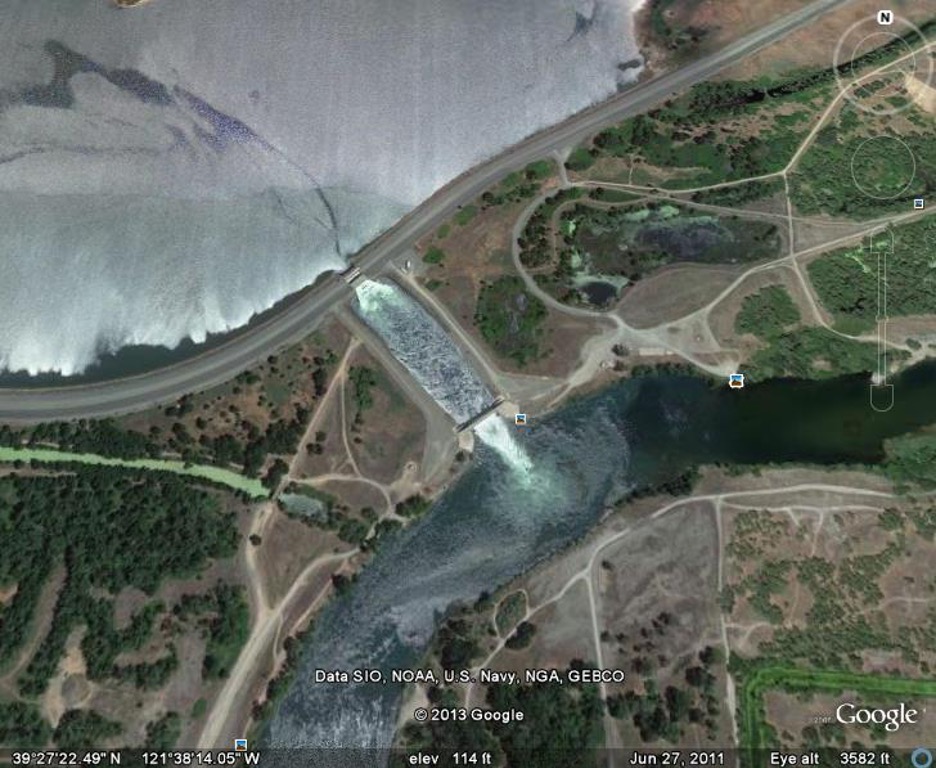
GSSA is hard at work looking for ways to increase salmon productivity in the Feather River, the Sacramento River’s biggest tributary. Until relatively recently, the Feather was capable of producing up to tens of million baby salmon. Today the only consistently good salmon habitat is in the last eight miles of river below the Oroville Dam. Further downstream the habitat would be decent but for hot water pollution from a manmade power generation system that kills incubating salmon eggs. After 13 years of acknowledging this problem but failing to fix it, the State of California was jolted from its slumber after GSSA organized a major political push involving state and federal senators. As a result, a fix involving plumbing modifications to route cold water through restored spawning and rearing channels is now being discussed. It will be a long way from discussion to implementation but at least we’re on the move. Stay tuned.
